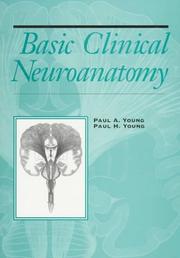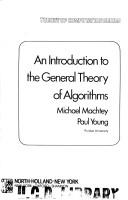| Listing 1 - 10 of 37 | << page >> |
Sort by
|
Book
ISBN: 9780813563831 0813563836 9780813573038 0813573033 9780813563824 0813563828 9780813563817 081356381X Year: 2016 Publisher: New Brunswick, NJ
Abstract | Keywords | Export | Availability | Bookmark
 Loading...
Loading...Choose an application
- Reference Manager
- EndNote
- RefWorks (Direct export to RefWorks)
2017 EISNER AWARD NOMINEE for Best Academic/Scholarly Work In the late 1970s and early 1980s, writer-artist Frank Miller turned Daredevil from a tepid-selling comic into an industry-wide success story, doubling its sales within three years. Lawyer by day and costumed vigilante by night, the character of Daredevil was the perfect vehicle for the explorations of heroic ideals and violence that would come to define Miller's work. Frank Miller's Daredevil and the Ends of Heroism is both a rigorous study of Miller's artistic influences and innovations and a reflection on how his visionary work on Daredevil impacted generations of comics publishers, creators, and fans. Paul Young explores the accomplishments of Miller the writer, who fused hardboiled crime stories with superhero comics, while reimagining Kingpin (a classic Spider-Man nemesis), recuperating the half-baked villain Bullseye, and inventing a completely new kind of Daredevil villain in Elektra. Yet, he also offers a vivid appreciation of the indelible panels drawn by Miller the artist, taking a fresh look at his distinctive page layouts and lines. A childhood fan of Miller's Daredevil, Young takes readers on a personal journey as he seeks to reconcile his love for the comic with his distaste for the fascistic overtones of Miller's controversial later work. What he finds will resonate not only with Daredevil fans, but with anyone who has contemplated what it means to be a hero in a heartless world. Other titles in the Comics Culture series include Twelve-Cent Archie, Wonder Woman: Bondage and Feminism in the Marston/Peter Comics, 1941-1948, and Considering Watchmen: Poetics, Property, Politics.
Comic books, strips, etc. --- Popular culture --- American literature --- Myth in literature. --- History and criticism. --- Miller, Frank, --- Daredevil (Fictitious character) --- Criticism and interpretation. --- History. --- Daredevil --- Murdock, Matt --- Murdock, Matthew Michael --- Murdock, Michael --- Man Without Fear --- Devil of Hell's Kitchen --- 82-931 --- 070.84 --- 741.5 --- 741.5 Spotprenten. Karikaturen. Cartoons. Striptekeningen. Satirische tekeningen --- Spotprenten. Karikaturen. Cartoons. Striptekeningen. Satirische tekeningen --- 070.84 Comics. Stripverhalen--(in de krant) --- Comics. Stripverhalen--(in de krant) --- 82-931 Stripverhaal --- Stripverhaal --- Miller, Frank
Book
ISBN: 0131228854 Year: 2004 Publisher: Upper Saddle River Pearson Education International
Abstract | Keywords | Export | Availability | Bookmark
 Loading...
Loading...Choose an application
- Reference Manager
- EndNote
- RefWorks (Direct export to RefWorks)

ISBN: 0683096664 0683093517 Year: 1997 Publisher: Baltimore, Md Williams & Wilkins
Abstract | Keywords | Export | Availability | Bookmark
 Loading...
Loading...Choose an application
- Reference Manager
- EndNote
- RefWorks (Direct export to RefWorks)
Human anatomy --- Neuropathology --- Neuroanatomy. --- Nervous System --- Neuroanatomie --- anatomy & histology. --- 611 --- Anatomie

ISBN: 044400226X 0444002278 0444992278 9780444002266 Year: 1979 Publisher: New York North Holland
Abstract | Keywords | Export | Availability | Bookmark
 Loading...
Loading...Choose an application
- Reference Manager
- EndNote
- RefWorks (Direct export to RefWorks)
Computer science --- complexe analyse (wiskunde) --- algoritmen --- Computer algorithms --- Recursive functions --- 681.3*G4 --- Functions, Recursive --- Algorithms --- Arithmetic --- Logic, Symbolic and mathematical --- Number theory --- Recursion theory --- Decidability (Mathematical logic) --- Mathematical software: algorithm analysis; certification and testing; efficiency; portability; reliability and robustness; verification --- Foundations --- 681.3*G4 Mathematical software: algorithm analysis; certification and testing; efficiency; portability; reliability and robustness; verification --- Programming languages (Electronic computers) --- #TCPW P3.0 --- 681.3*F2 --- Computer languages --- Computer program languages --- Computer programming languages --- Machine language --- Electronic data processing --- Languages, Artificial --- 681.3*F2 Analysis of algorithms and problem complexity--See also {681.3*B6}; {681.3*B7}; {681.3*F13} --- Analysis of algorithms and problem complexity--See also {681.3*B6}; {681.3*B7}; {681.3*F13} --- Recursive Functions --- Computer algorithms. --- Programming languages (Electronic computers). --- Recursive functions. --- Logique mathématique --- Récursivité, Théorie de la --- Algorithmes --- Complexite --- Algorithmes -- Complexite
Book
ISBN: 9780754664178 9781315243542 9781351901352 Year: 2008 Publisher: Aldershot Ashgate
Abstract | Keywords | Export | Availability | Bookmark
 Loading...
Loading...Choose an application
- Reference Manager
- EndNote
- RefWorks (Direct export to RefWorks)
As he demonstrates that narratives of seduction as a master plot for French literature in the eighteenth century, Paul Young argues that the prevalence of this trope was a reaction to a dominant cultural discourse that coded the novel and the new practice of solitary reading as dangerous, seductive practices. Situating his study in the context of paintings, educational manuals, sermons, and criticism that caution against the act of reading, Young considers both canonical and lesser-known works by authors that include Rousseau, Sade, Bastide, Laclos, Crebillon fils, and the writers of two widely read libertine novels. How these authors responded to a cultural climate that viewed literature, and especially the novel, as seductive, sheds light on the perils and pleasures of authorship, the ways in which texts interact with the larger cultural discourse, and what eighteenth-century texts tell us about the dangers of reading or writing. Ultimately, Young argues, the seduction not in the text, but by the text raises questions about the nature of pleasure in eighteenth-century French literature and culture.
028 --- 840 "17" --- Lezen. Lectuur --- Franse literatuur--18e eeuw. Periode 1700-1799 --- 840 "17" Franse literatuur--18e eeuw. Periode 1700-1799 --- 028 Lezen. Lectuur --- French literature --- History and criticism --- Bellettrie. --- Frans. --- Fransk litteratur --- French literature. --- Julie ou La Nouvelle Héloïse (Rousseau). --- Leser. --- Literatur. --- Verführung --- Verführung. --- Verleiding. --- Historia --- 1700-1799. --- Geschichte 1700-1800. --- Französisch.
Book
ISBN: 0139365184 0139365001 Year: 1975 Volume: 374 Publisher: Englewood Cliffs (N.J.): Prentice Hall
Abstract | Keywords | Export | Availability | Bookmark
 Loading...
Loading...Choose an application
- Reference Manager
- EndNote
- RefWorks (Direct export to RefWorks)
Emotions --- Popular works --- 159.947 --- Psychologie van de wil. Wilskracht --- 159.947 Psychologie van de wil. Wilskracht --- Feelings --- Human emotions --- Passions --- Psychology --- Affect (Psychology) --- Affective neuroscience --- Apathy --- Pathognomy --- Popular works.
Book
ISBN: 9783822835937 3822835935 Year: 2009 Publisher: Köln: Taschen,
Abstract | Keywords | Export | Availability | Bookmark
 Loading...
Loading...Choose an application
- Reference Manager
- EndNote
- RefWorks (Direct export to RefWorks)
Le cinéma est-il crédible en tant que forme d’art? Le débat est aussi ancien que le cinéma lui-même. Il a donné lieu à d’innombrables théories abordant la question sous un angle formel, psychologique, idéologique, social ou auteuriste. Quoi qu’il en soit, de nombreux artistes ont employé ce support pour entreprendre des expérimentations esthétiques généralement associées à l’art moderne et contemporain. Pour étudier ces oeuvres, cet ouvrage les regroupe en une dizaine de sous-genres tels que l’abstraction, le collage, le found footage, le postsurréalisme, le structuralisme, le tableau, la parodie et le cinéma élargi. Illustrée par plus de 300 films, cette histoire du cinéma expérimental évoque aussi bien des grands maîtres tels que Hans Richter, Man Ray et Stan Brakhage que des artistes contemporains comme Stan Douglas, Pipilotti Rist et Doug Aitken, des auteurs de légende tels que David Lynch, Jean-Luc Godard et Luis Buñuel que des stars underground comme Kenneth Anger, Matthew Barney, Bruce Conner, Michael Snow, Owen Land et Paul McCarthy.
Experimental films --- Films expérimentaux --- History and criticism --- Histoire et critique --- Film underground --- Films experimentaux --- Films expérimentaux --- Cinéma expérimental --- Films expérimentaux. --- History and criticism.
Book
ISBN: 9783822835944 3822835943 Year: 2009 Publisher: Köln Taschen
Abstract | Keywords | Export | Availability | Bookmark
 Loading...
Loading...Choose an application
- Reference Manager
- EndNote
- RefWorks (Direct export to RefWorks)
791.43 --- abstracte film --- camp --- concept art --- conceptuele kunst --- dadaïsme --- expanded cinema --- experimentele film --- film --- filmgeschiedenis --- installaties --- surrealisme --- twintigste eeuw --- 798.43 --- autobiografie --- film, geschiedenis der filmkunst, overige landen --- Film --- geschiedenis --- geschiedenis. --- Geschiedenis. --- film [discipline] --- Experimental films. --- Films expérimentaux.
Book
ISBN: 0024312010 Year: 1994 Publisher: Englewood Cliffs, N.J. Prentice Hall
Abstract | Keywords | Export | Availability | Bookmark
 Loading...
Loading...Choose an application
- Reference Manager
- EndNote
- RefWorks (Direct export to RefWorks)
Electronics --- Telecommunication --- #TELE:TMIC --- 621.39 --- 621.39 Telecommunication. Telecontrol --- Telecommunication. Telecontrol --- Electric communication --- Mass communication --- Telecom --- Telecommunication industry --- Telecommunications --- Communication --- Information theory --- Telecommuting --- Electrical engineering --- Physical sciences --- Telecommunication technology --- informatica --- datacommunicatie --- elektronica
Book
Year: 1961 Publisher: New York (N.Y.): Wiley,
Abstract | Keywords | Export | Availability | Bookmark
 Loading...
Loading...Choose an application
- Reference Manager
- EndNote
- RefWorks (Direct export to RefWorks)
| Listing 1 - 10 of 37 | << page >> |
Sort by
|

 Search
Search Feedback
Feedback About UniCat
About UniCat  Help
Help News
News